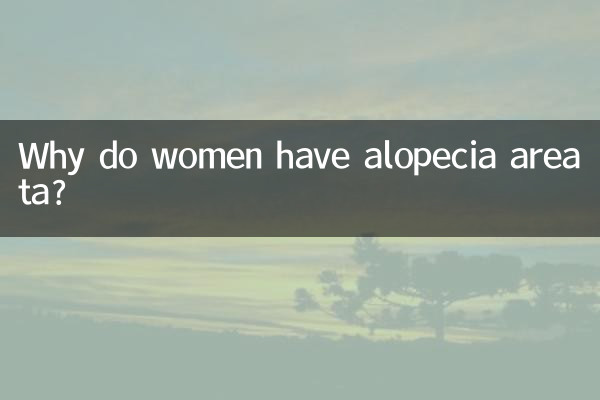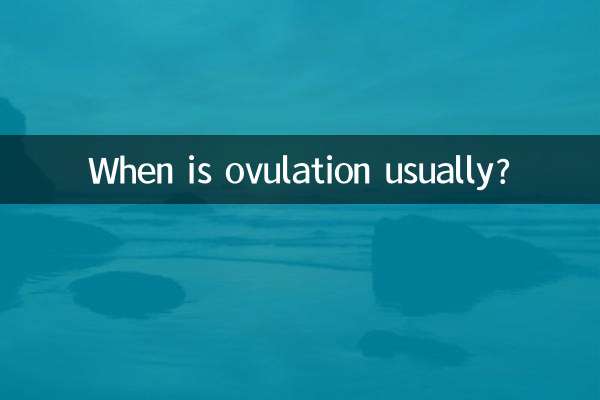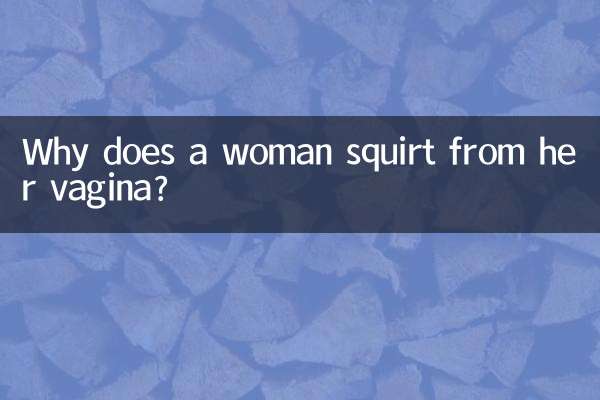Why do women have alopecia areata? Revealing the hot topics and scientific analysis on the Internet in the past 10 days
Alopecia areata (commonly known as "ghost shaving") is a common hair loss symptom that manifests as the sudden appearance of round or oval hair loss areas on the scalp. In recent years, the issue of female alopecia areata has aroused widespread discussion. Combining hot topics and authoritative data on the Internet in the past 10 days, this article will start fromCauses, symptoms, treatment and preventionA structured analysis of female alopecia areata in four aspects.
1. Statistics of hot search topics related to alopecia areata in the past 10 days

| Hot search keywords | Discussion popularity (10,000) | main focus |
|---|---|---|
| Causes of alopecia areata in women | 125.6 | stress, hormones, immune system |
| Alopecia areata treatment methods | 98.3 | Minoxidil, hair transplantation, Chinese medicine |
| postpartum hair loss | 87.4 | changes in estrogen levels |
| immune alopecia | 76.2 | Autoantibodies attack hair follicles |
| Stress and hair loss | 65.8 | Effects of cortisol secretion |
2. Five major causes of alopecia areata in women
1.Immune system abnormalities: About 50% of patients with alopecia areata have autoantibodies against hair follicles, causing the hair follicles to enter the telogen phase.
2.Hormone fluctuations: Postpartum, menopause or thyroid disease (such as hyperthyroidism/hypothyroidism) can disrupt hormone balance and cause hair loss.
3.psychological stress: Long-term anxiety or sudden stress events will increase cortisol levels and inhibit the hair follicle growth cycle.
4.nutritional deficiencies: Ferritin levels below 30μg/L or vitamin D deficiency may aggravate hair loss.
5.genetic factors: 20% of patients have a family history, and specific genes (such as HLA-DQB1*03) are associated with the risk of alopecia areata.
3. Clinical grading and manifestations of alopecia areata
| Grading | Hair loss area ratio | Symptom characteristics |
|---|---|---|
| Mild (Grade I) | <25% | Single round hair loss spot with clear border |
| Moderate (Level II) | 25%-50% | Multiple hair loss spots that can merge into patches |
| Severe (Level III) | >50% | Loss of hair on the entire head or body |
4. Comparison of mainstream treatment options
| Treatment | efficient | Course of treatment | Things to note |
|---|---|---|---|
| topical corticosteroids | 60%-70% | 3-6 months | Skin atrophy may occur |
| Minoxidil (5%) | 40%-50% | ≥6 months | Requires continued use to prevent recurrence |
| Immunotherapy (DPCP) | 30%-80% | 4-12 months | May cause contact dermatitis |
| low intensity laser | 35%-45% | 2-3 times a week | High security but high cost |
5. Prevention and daily care suggestions
1.Stress reduction management: Daily meditation or yoga can reduce cortisol levels by 23%-31% ("JAMA Dermatology" 2023).
2.Nutritional supplements: Recommended daily intake of foods containing iron (18mg), zinc (8mg) and vitamin B12 (2.4μg).
3.Gentle hair care: Avoid high-temperature hair drying (>150℃) and chemical dyeing and perming, and choose a weakly acidic shampoo with pH 5.5.
4.early intervention: It is found that seeking treatment within 2 weeks of hair loss spots can increase the efficacy by 1.5 times ("British Journal of Dermatology").
Conclusion: Female alopecia areata is the result of multiple factors. With scientific treatment and lifestyle adjustments, about 70% of patients can regain their hair within one year. If symptoms persist, it is recommended to see a dermatologist for professional evaluation as soon as possible.

check the details

check the details